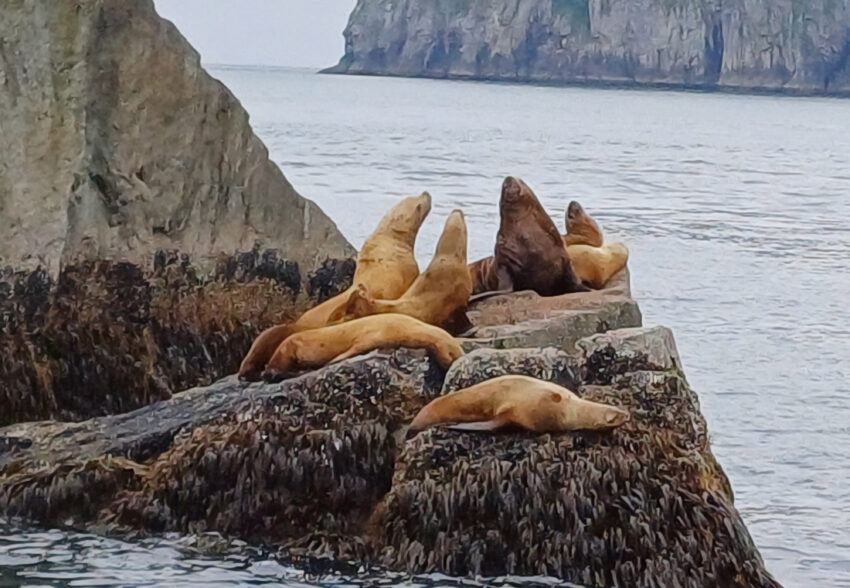Friday, July 28, 2022: Glaciers, sea lions and whales!
Info:
Resurrection Bay is a fjord, that is, a narrow bay cut deep into the land by glaciers. The ecosystem of fjords is one of the richest on earth. They exist in only six areas on our planet. The prerequisite is that a glacier cuts a deep, U-shaped valley into a coast during the ice age. When the glacier melts and the sea level rises, the valley fills with seawater. Resurrection Bay is about 300 m deep and ice-free all year round. Sea otters, harbor seals and Steller sea lions (named after the German biologist Georg Steller) live here.
In 1792, the Russian explorer Alexander Baranof was driven into this bay by a violent storm in the freezing North Pacific and survived as a result. The storm subsided on Easter Sunday, and in commemoration of that date, Baranof named the bay Resurrection Bay.
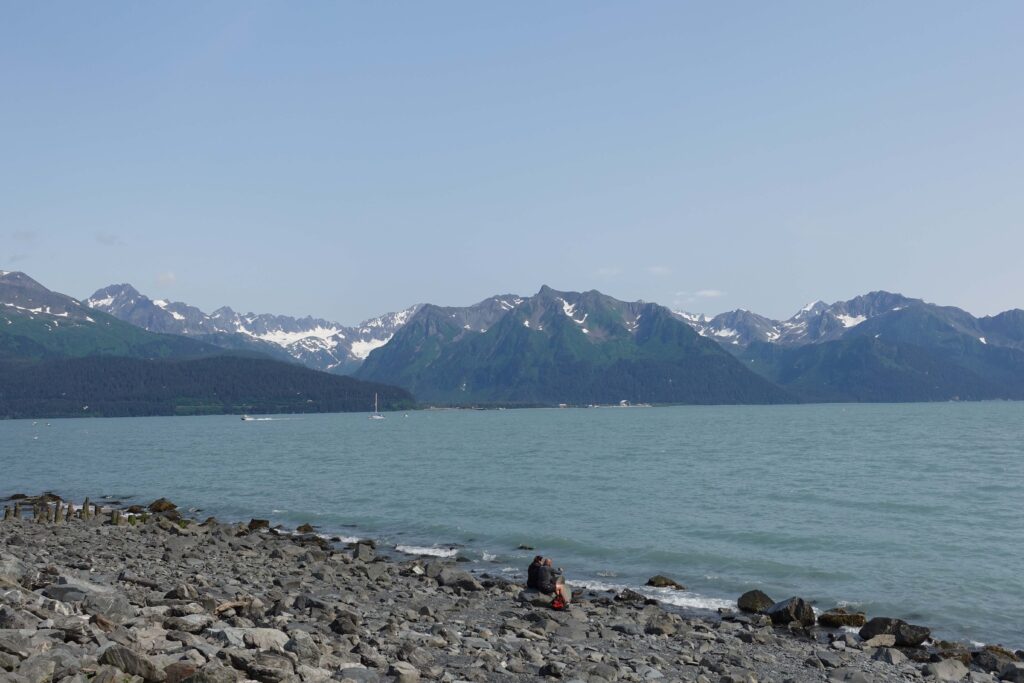
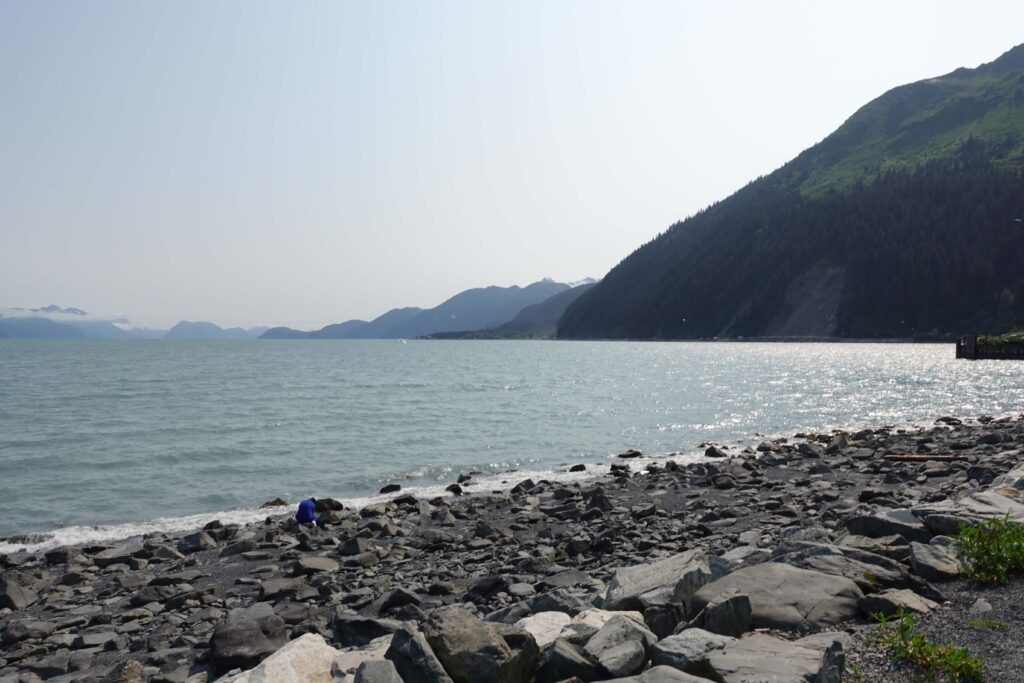
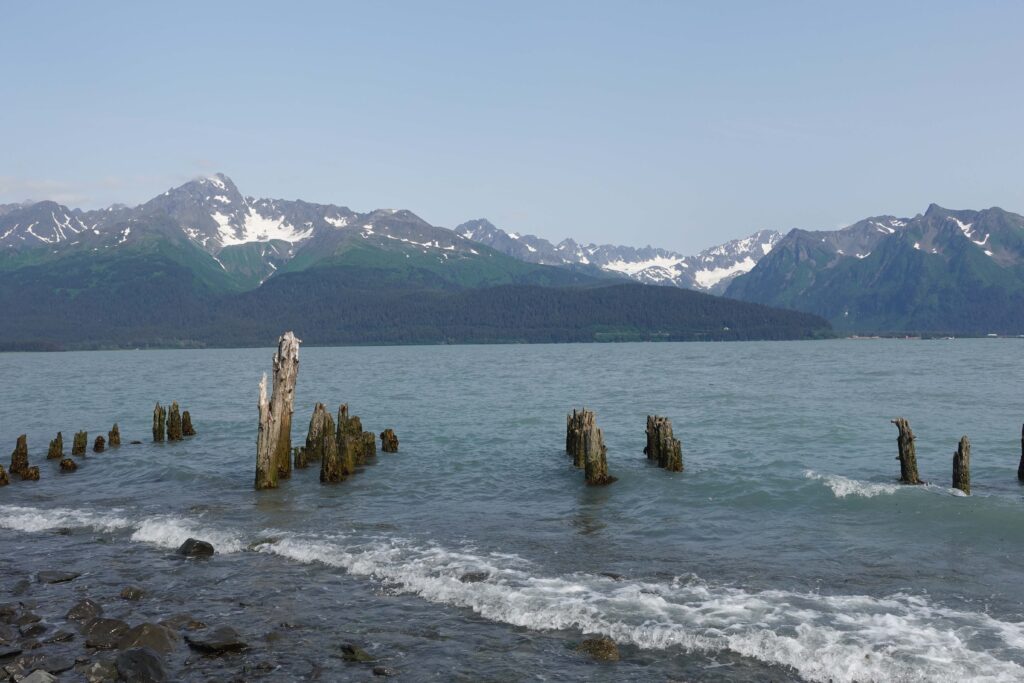
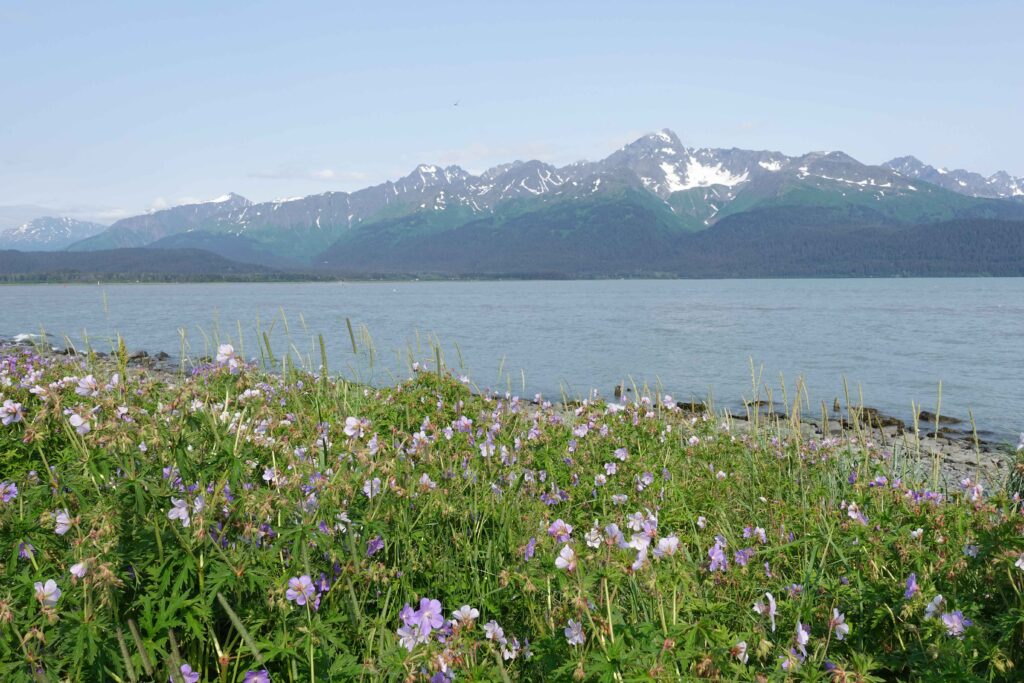
Seward is a harbor town at the end of the Bay and has about 2,700 inhabitants. Here you will find the Alaska SeaLife Center, where you can learn a lot about Resurrection Bay.
Due to its location, Seward has a comparatively mild climate and higher precipitation than the rest of Alaska. With its ice-free harbor and fishing, Seward was already a thriving town in the previous century. All that changed on March 27, 1964, when the entire Seward waterfront and harbor sank into the Bay after the Good Friday earthquake. This created a ten-meter high wall of water on which oil was burning. 40 wagons filled with oil exploded in a chain reaction. People ran for their lives and sought higher ground. 25 minutes after the earthquake, a 13-meter tsunami reached the city at a speed of 100 km per hour. The last tsunamis stopped only after ten hours. Thirteen people died, and Seward was completely destroyed.
My opinion:
I like what people have done with their city since then. So well, in fact, that I stayed four nights.


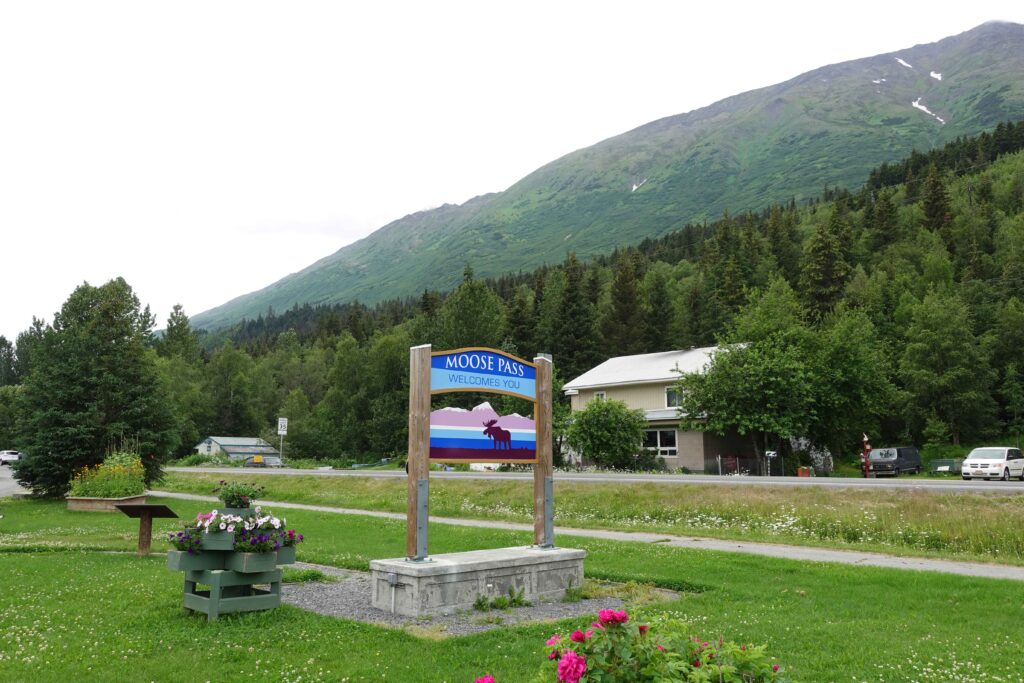
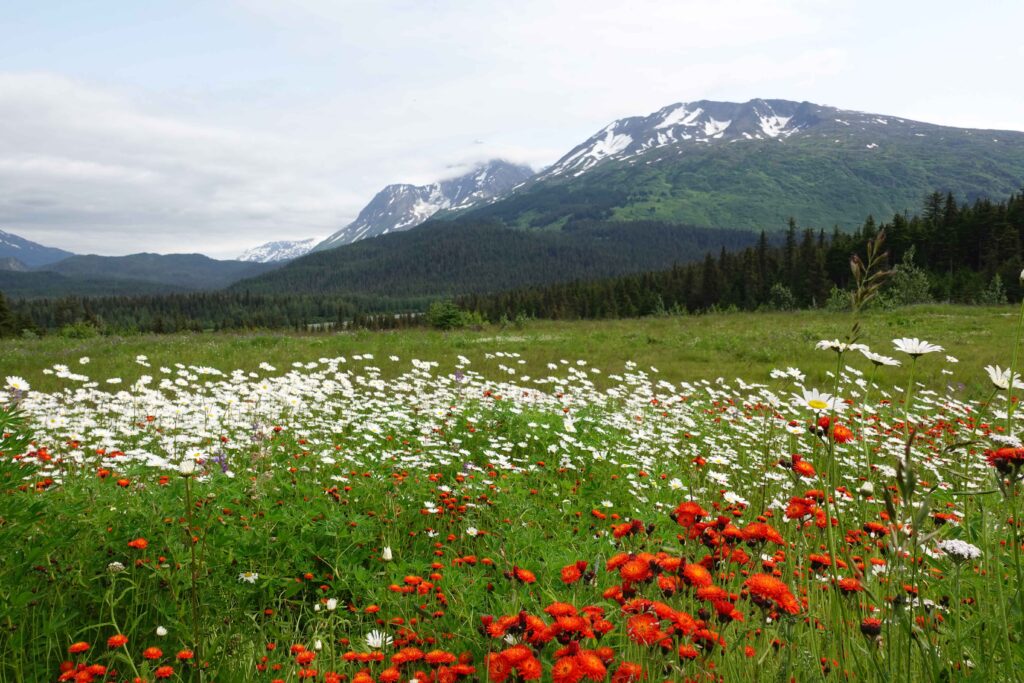
Diary:
From Portage it is not far to Seward. The Kenai Peninsula offers a lot of scenic variety and above all: flowers, flowers and flowers again!
Since there had been another major earthquake in the North Pacific a week earlier and the tsunami sirens had gone off in the middle of the night on the coasts of the Kenai Peninsula, I looked for a campsite a bit outside, on the Resurrection River. Beautiful!
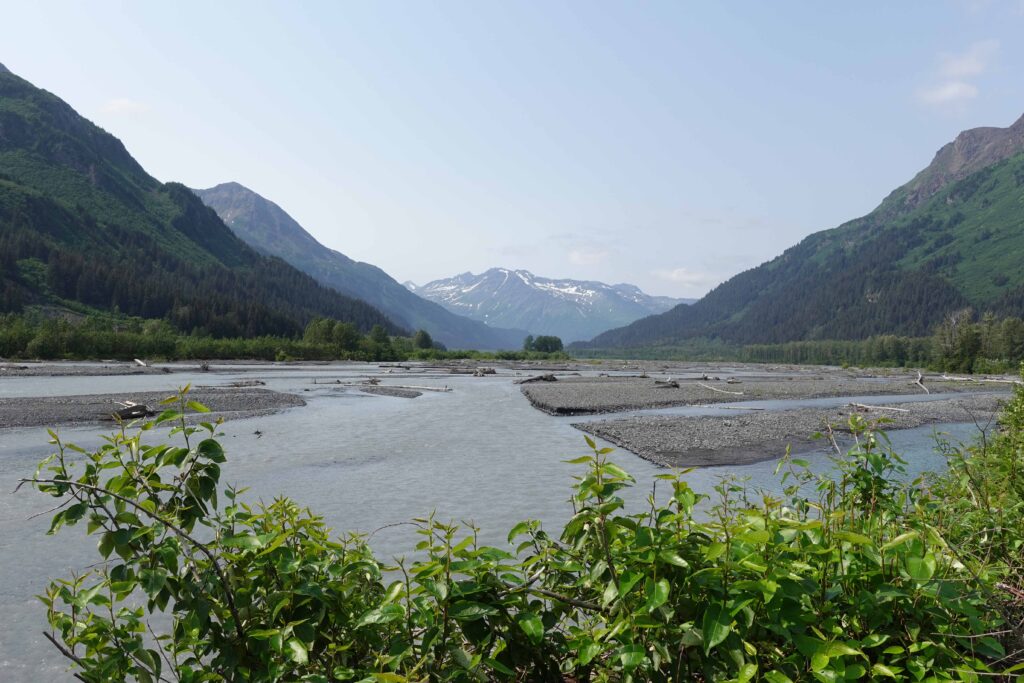
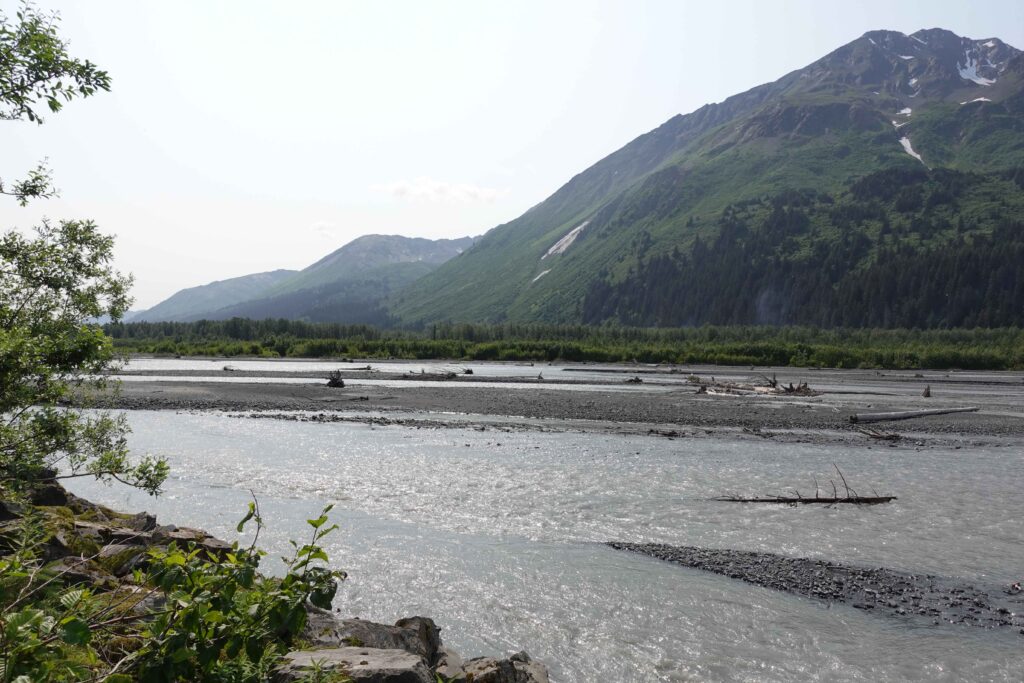
I liked Seward from the first moment I saw it. I immediately marched the first mile of the Iditarod Trail along the beach. There are several campgrounds right on Resurrection Bay here, but as I said, I was too chicken to take one of them.
For the next day, I booked the Kenai Fjord tour, which takes you to some of the bay’s many islands, then to the Aialik Glacier, and finally out to sea, hoping to encounter a whale or two.
I don’t think I need to comment. It is enough to see some pictures to understand that this was one of the highlights of the whole trip.
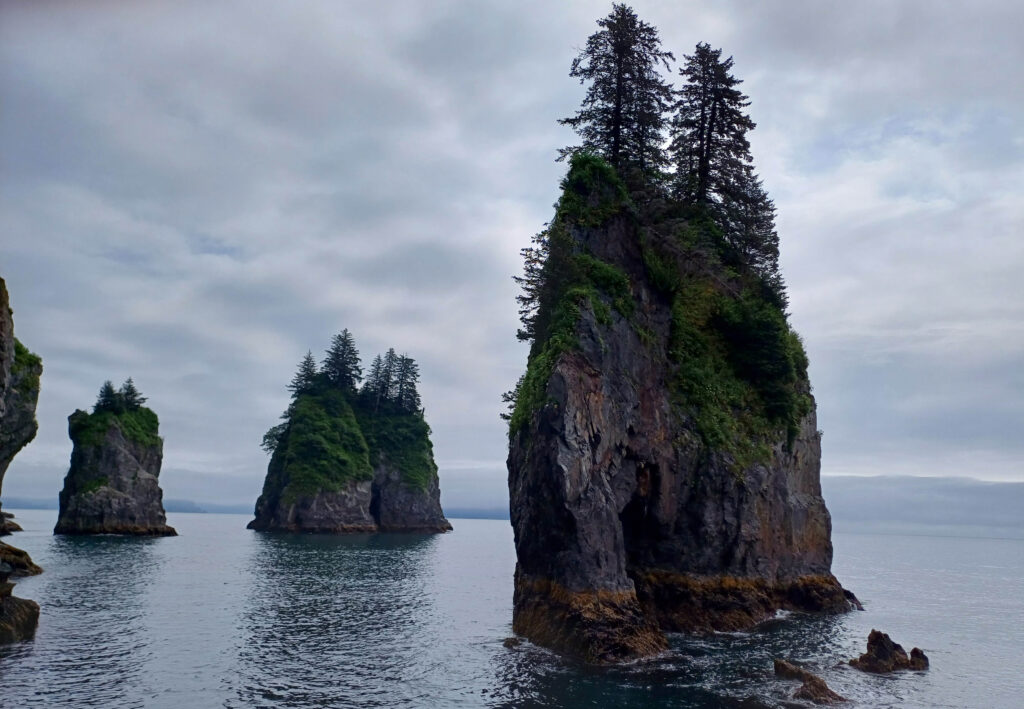
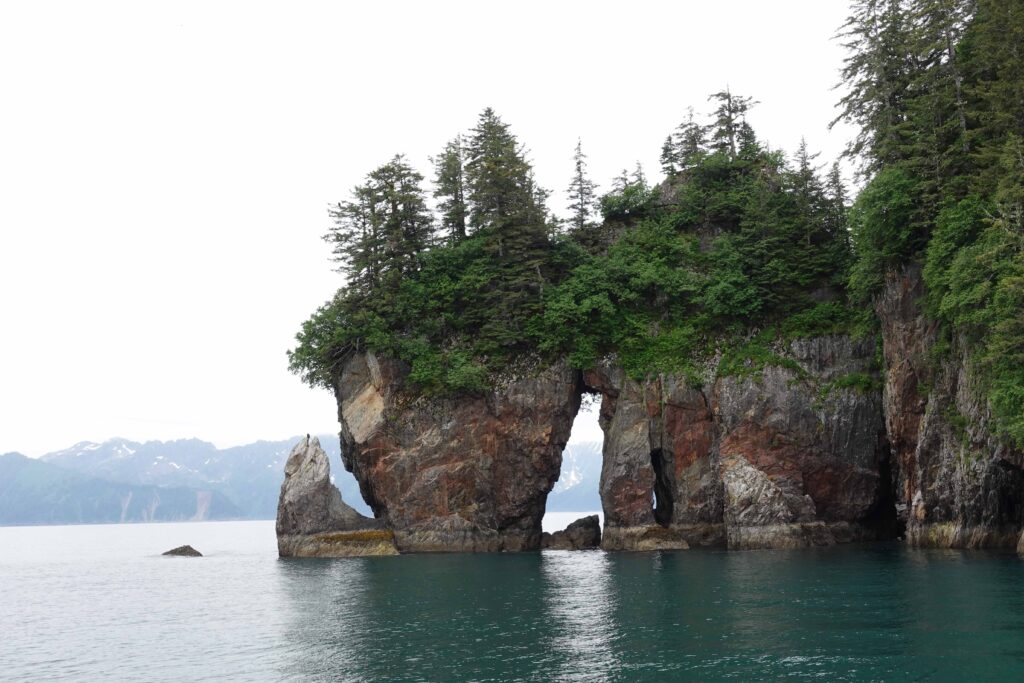
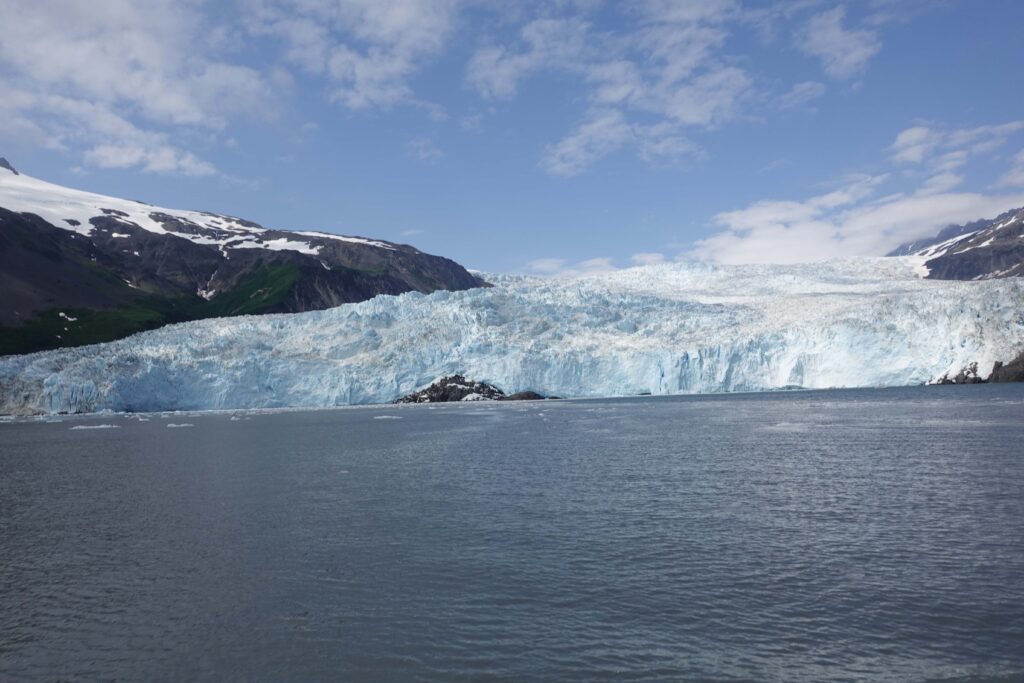
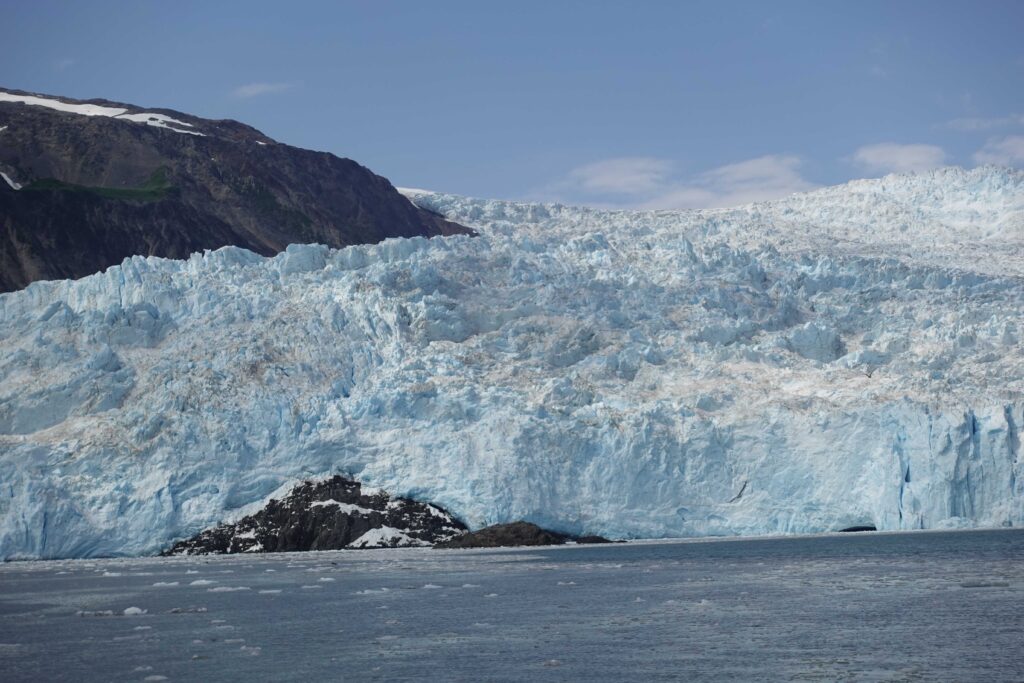
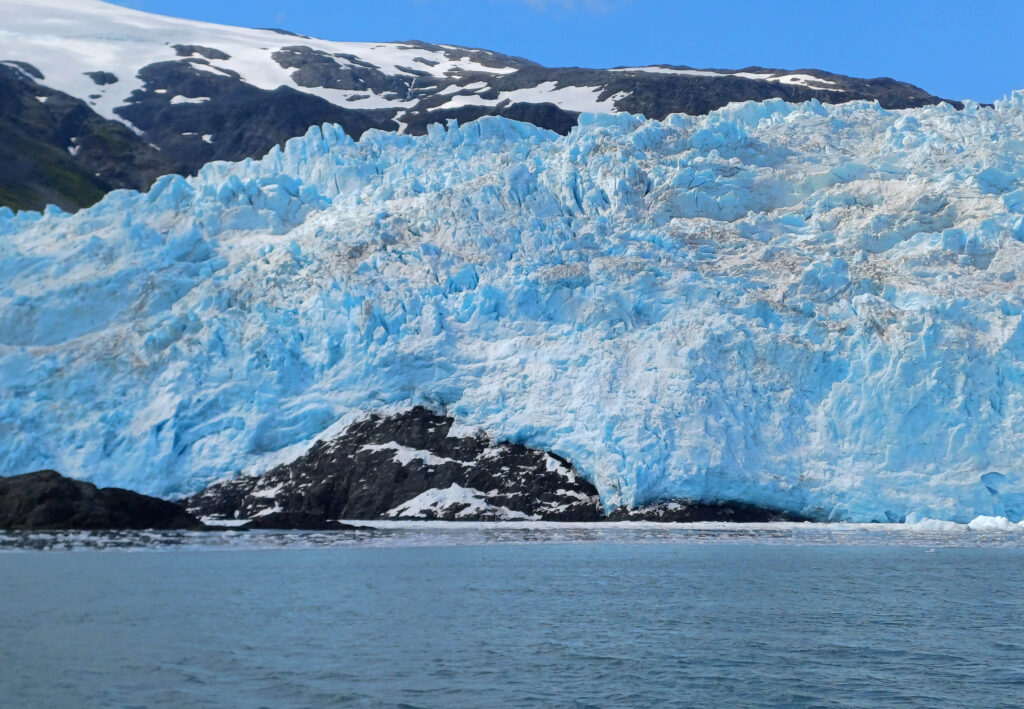

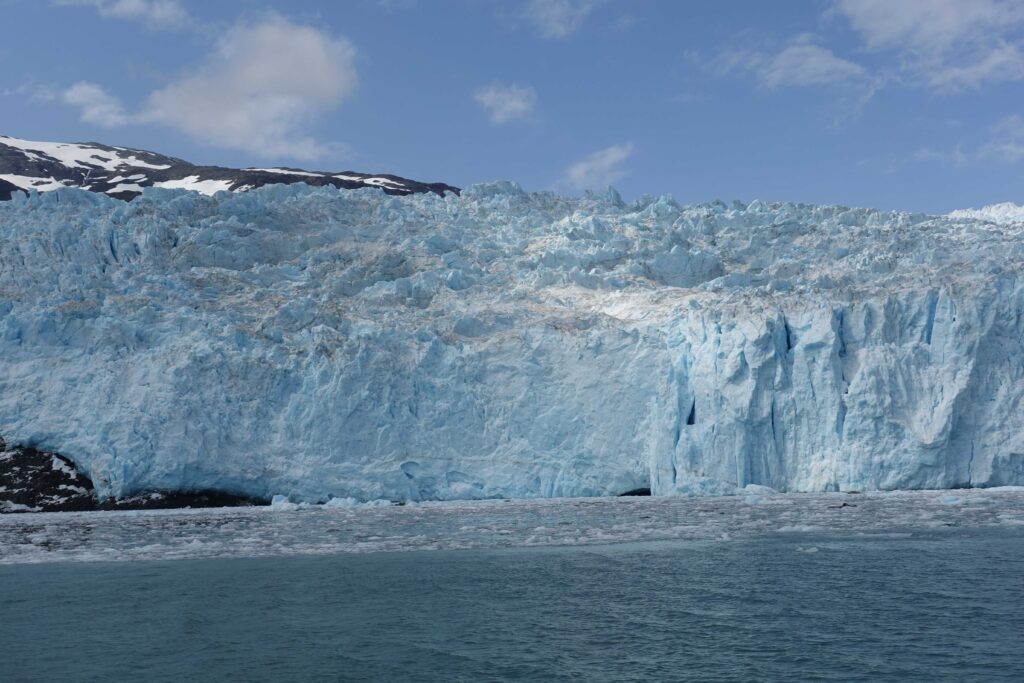
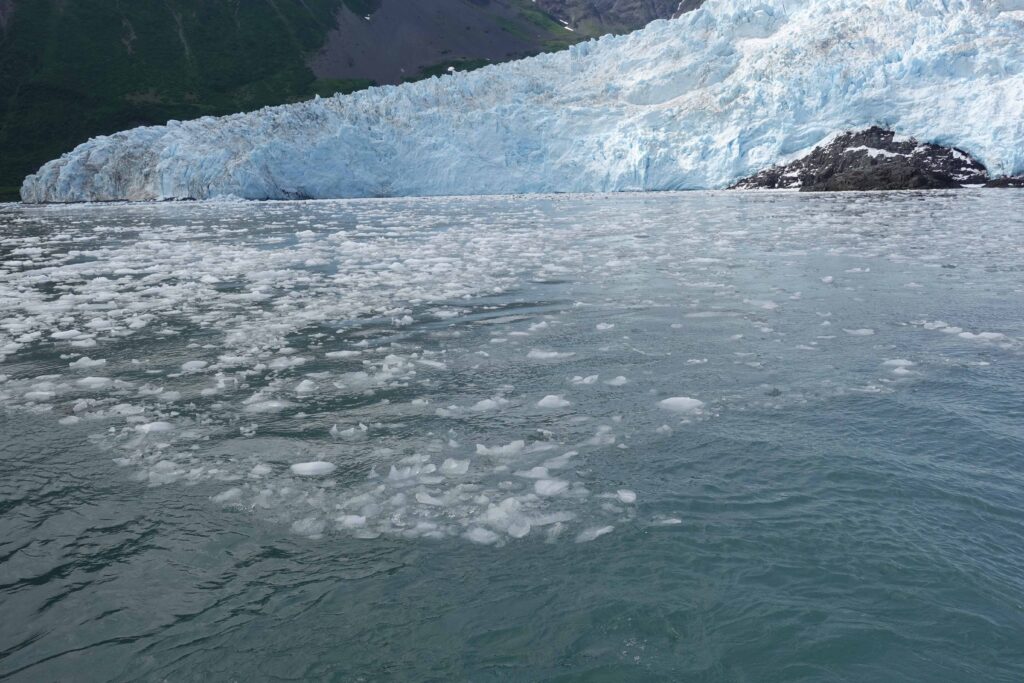
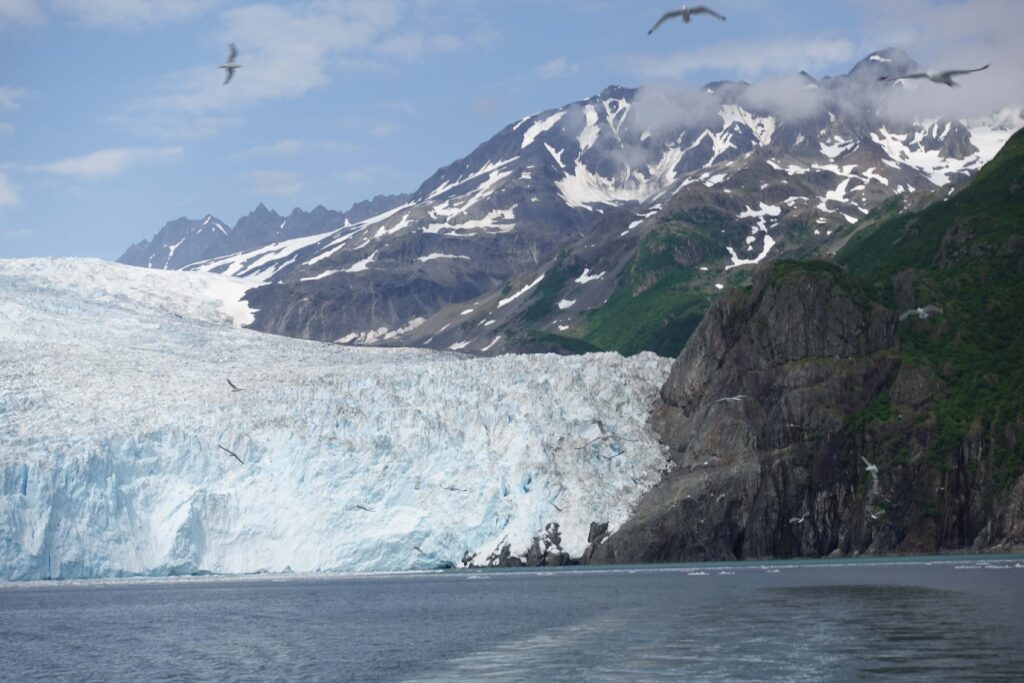
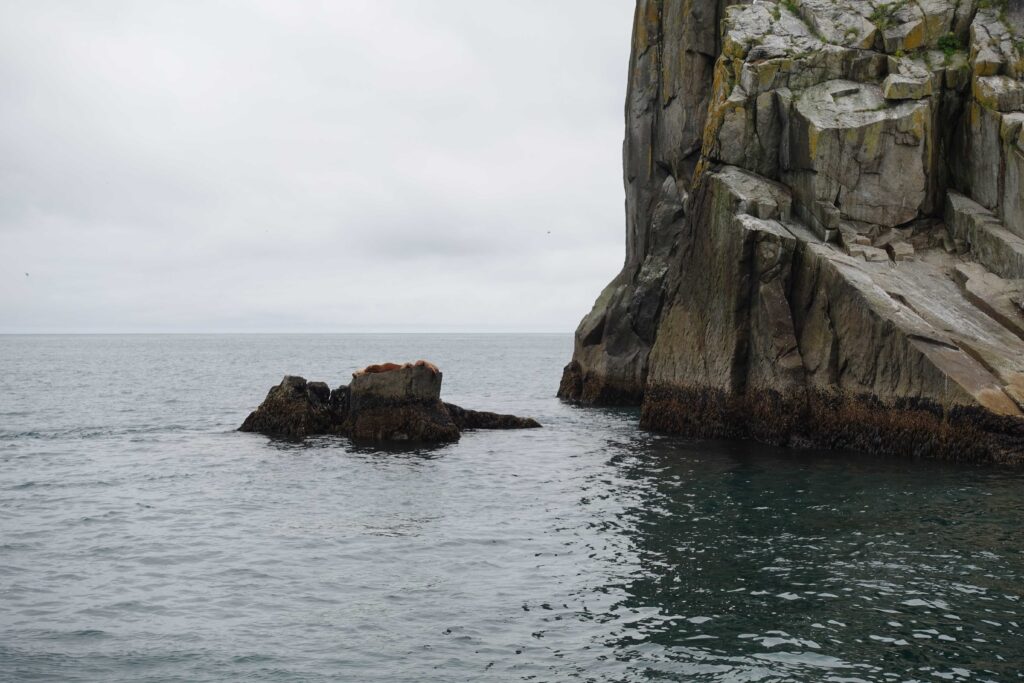
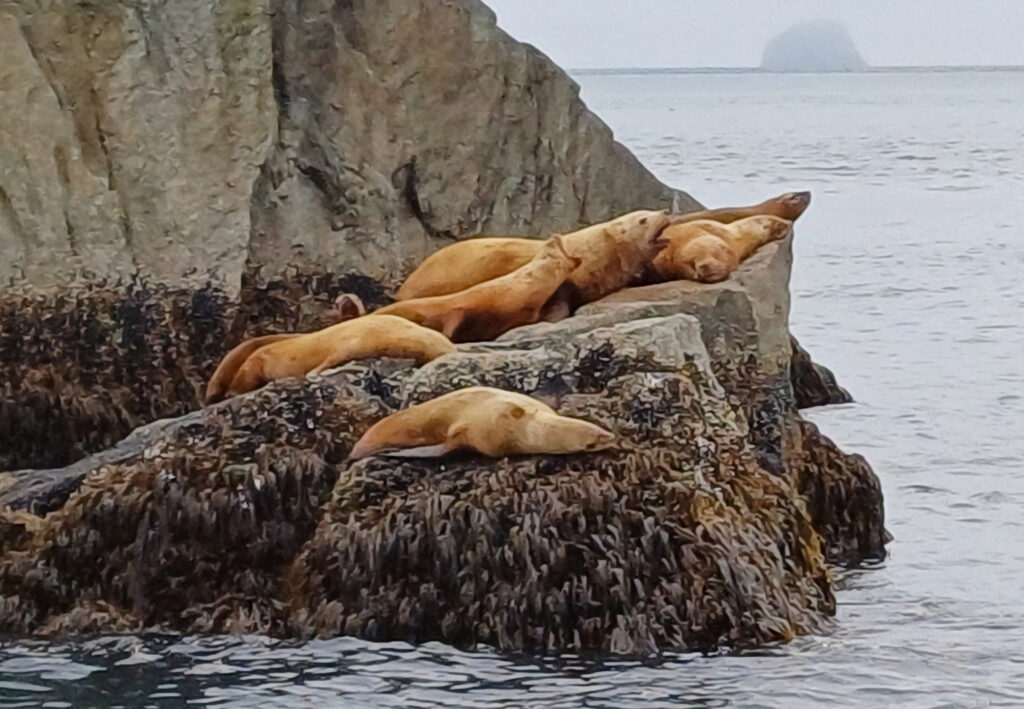

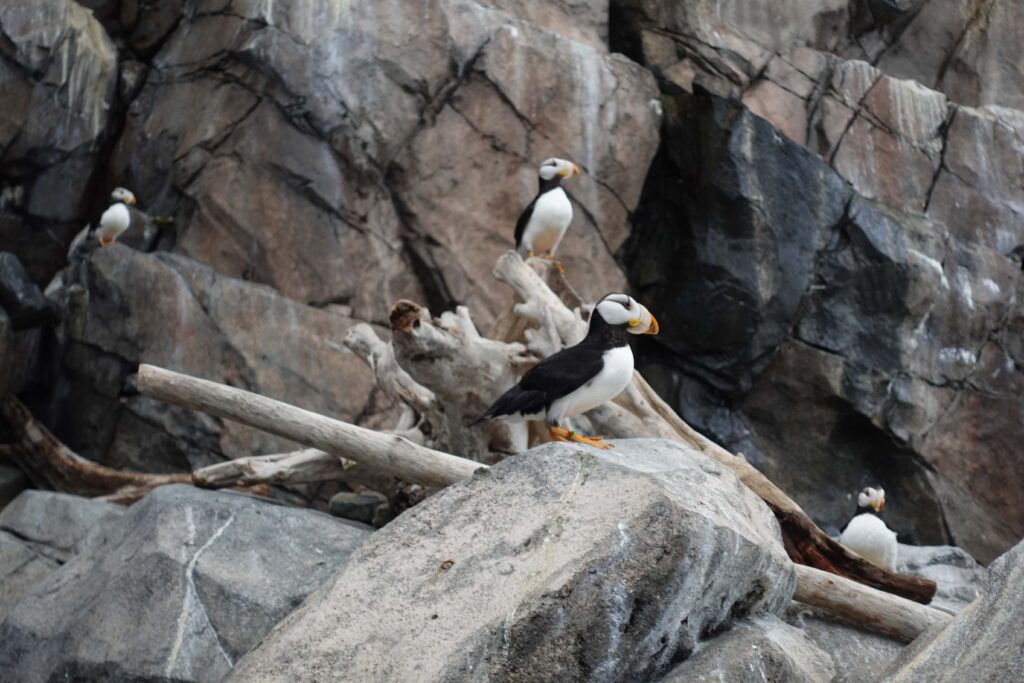

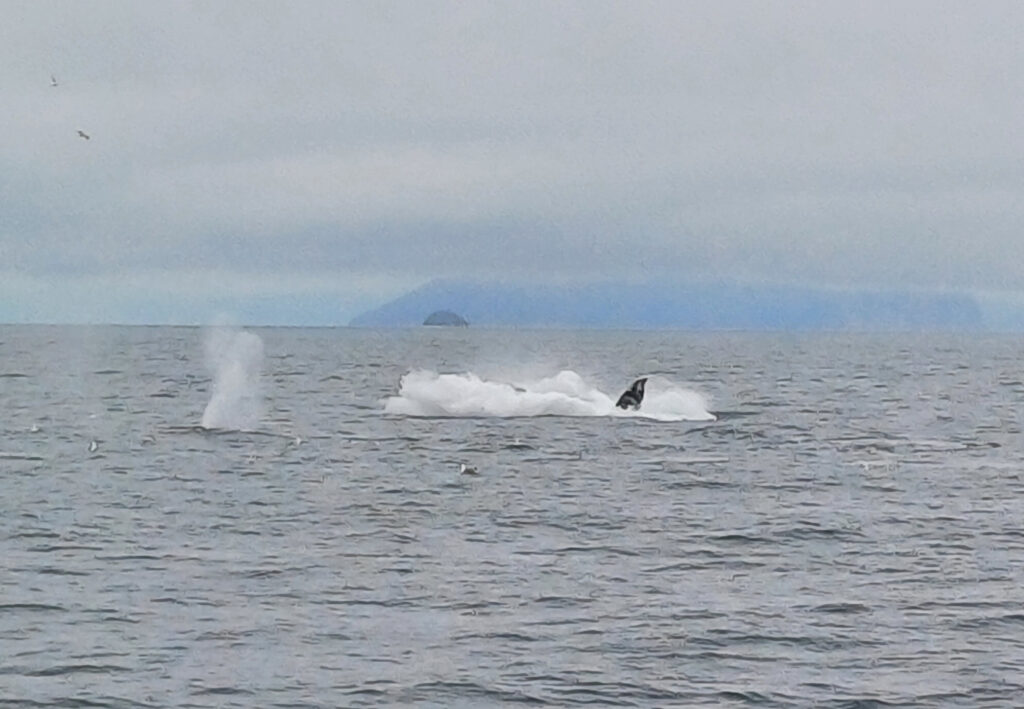
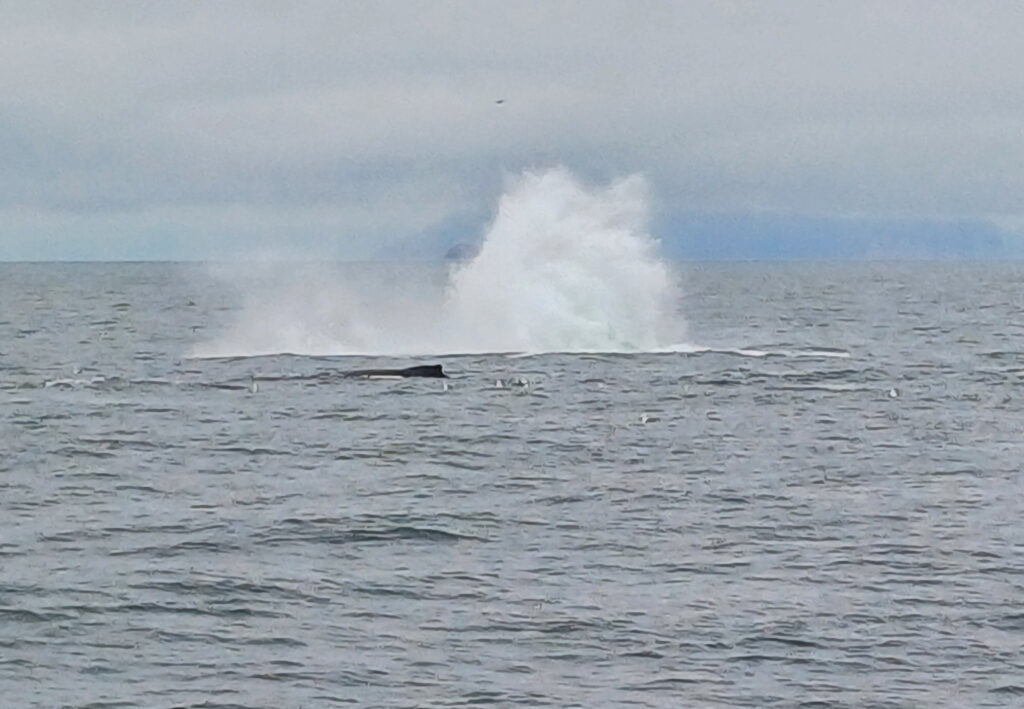
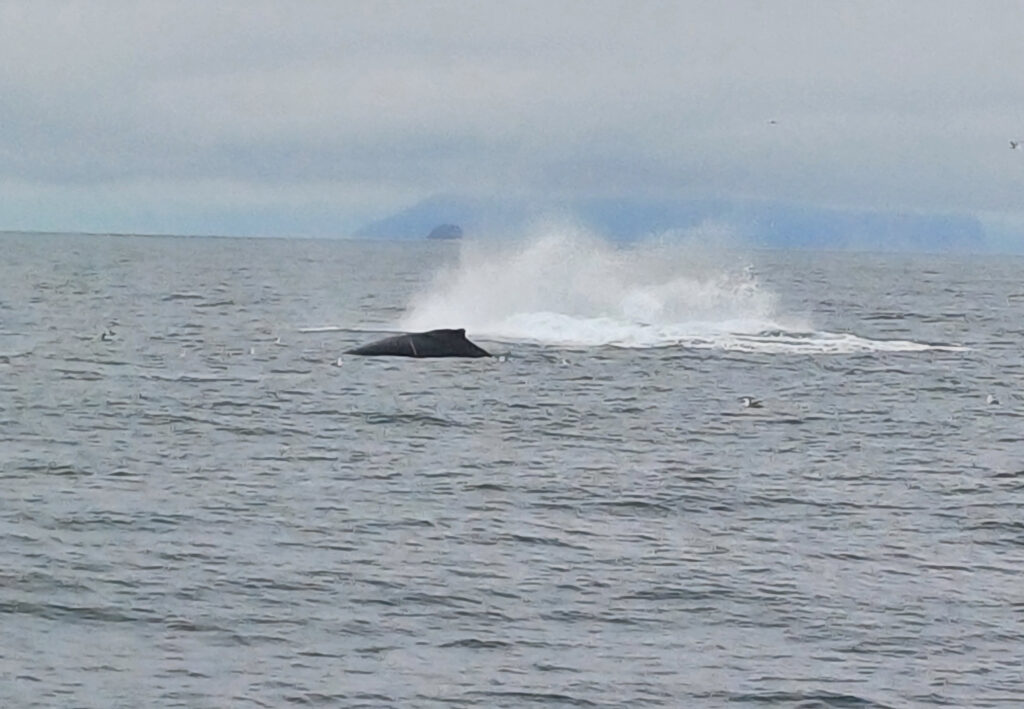

The next day I hiked to the Exit Glacier, but it is receding so fast that you can’t get there now without climbing gear. 200 years ago, the glacier ended where I took the first photo. On the way to the glacier you can see the years. Where it was in the year I was born, there is now a forest.
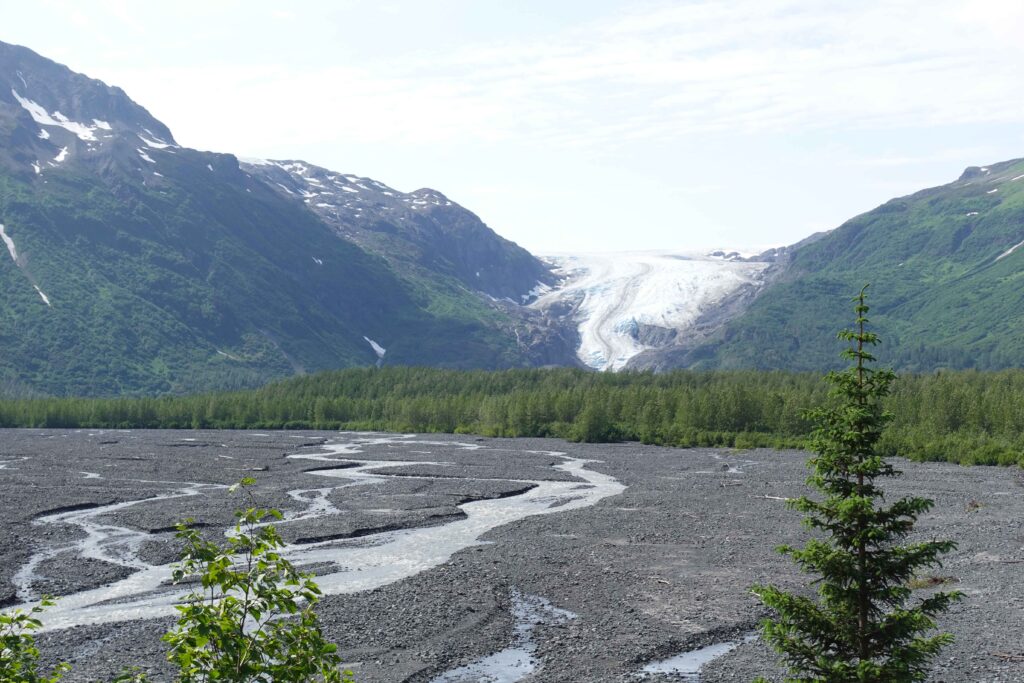
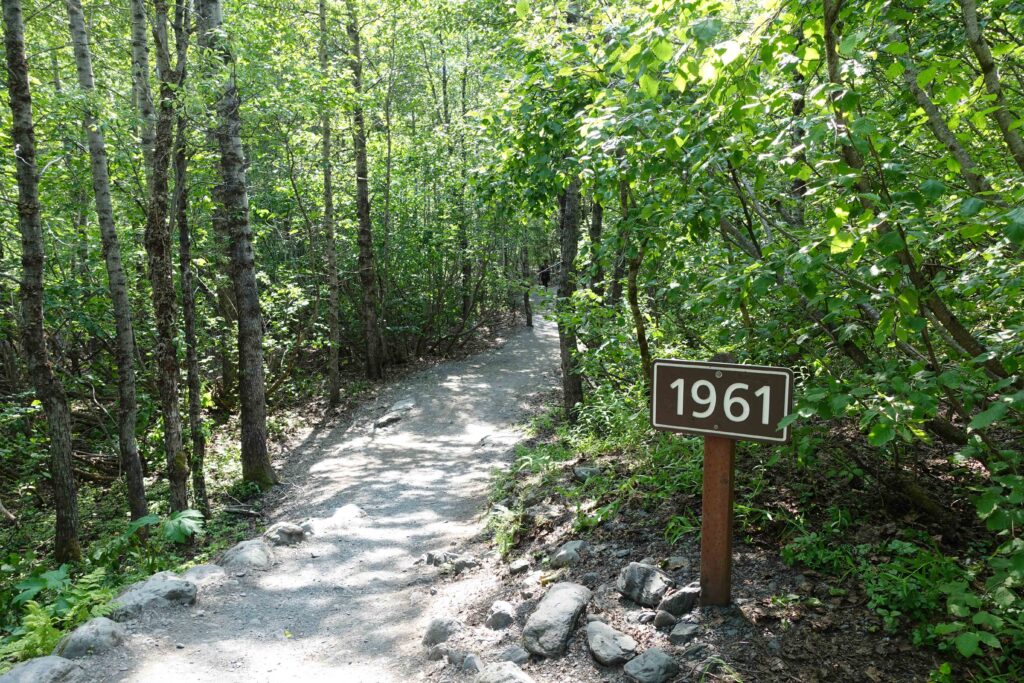
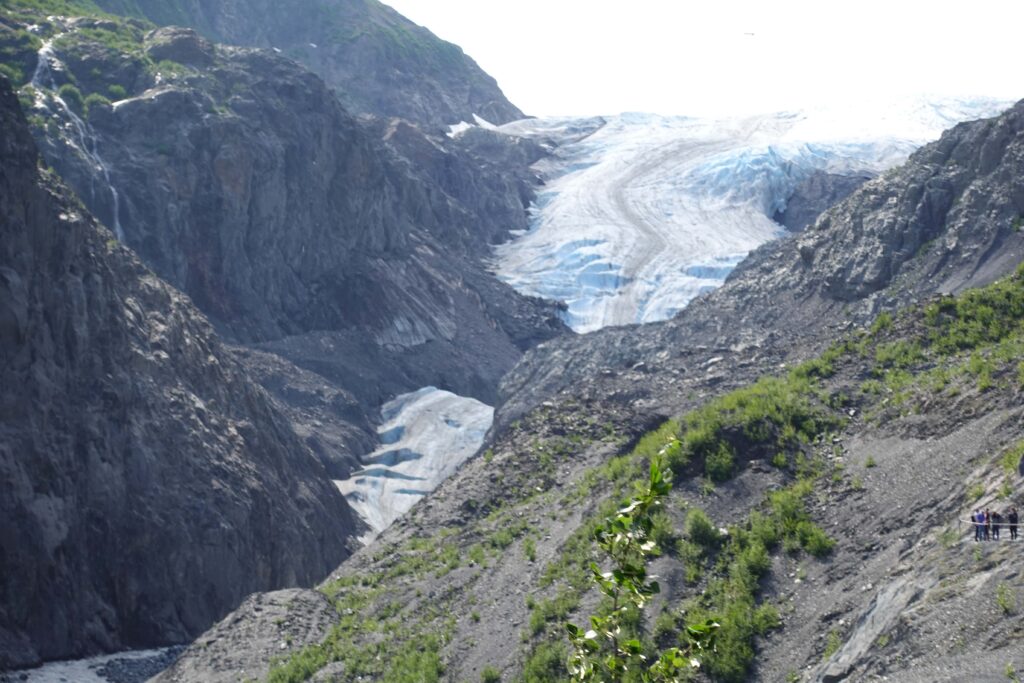
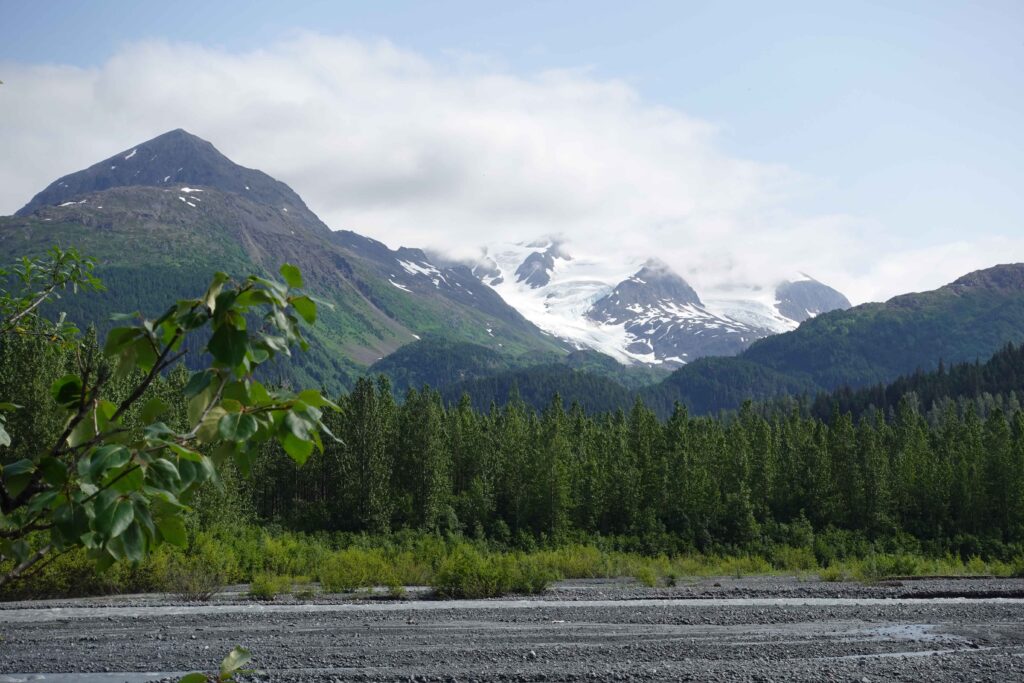

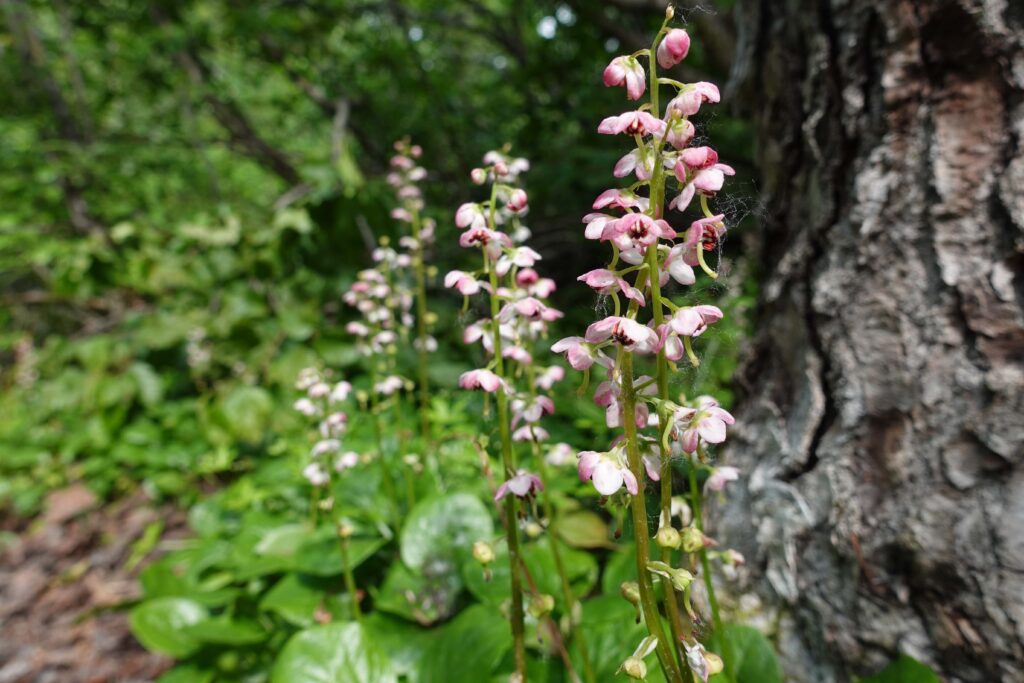
The weather app predicted rain for my last day in Seward – ideal for a stroll around town and a visit to the Alaska SeaLife Center, where I ended up staying much longer than I had intended. Although it was not raining.
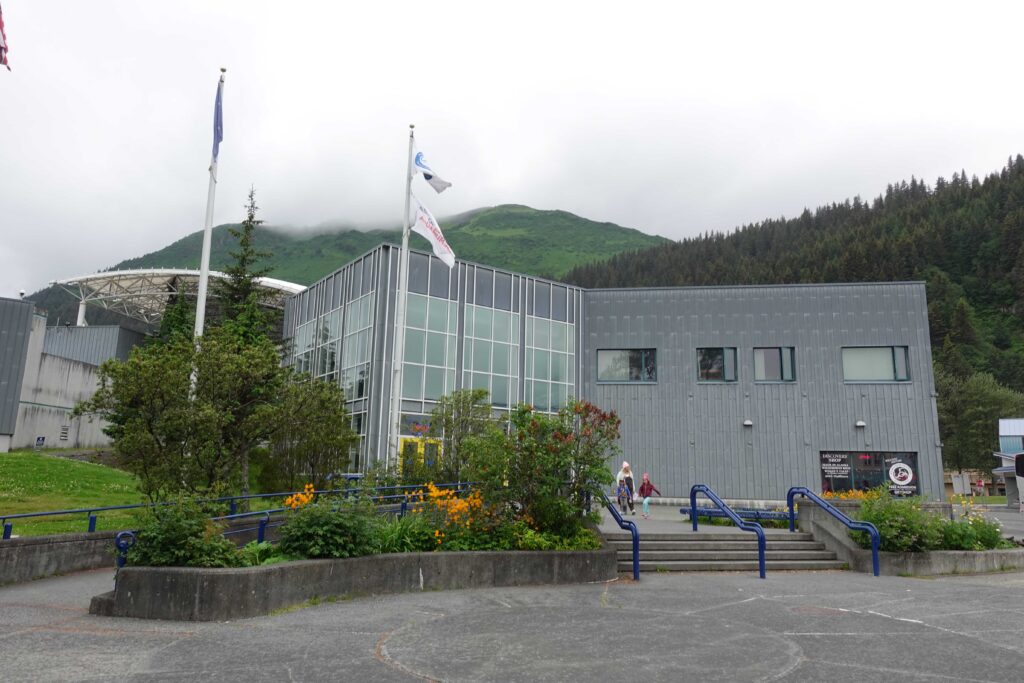
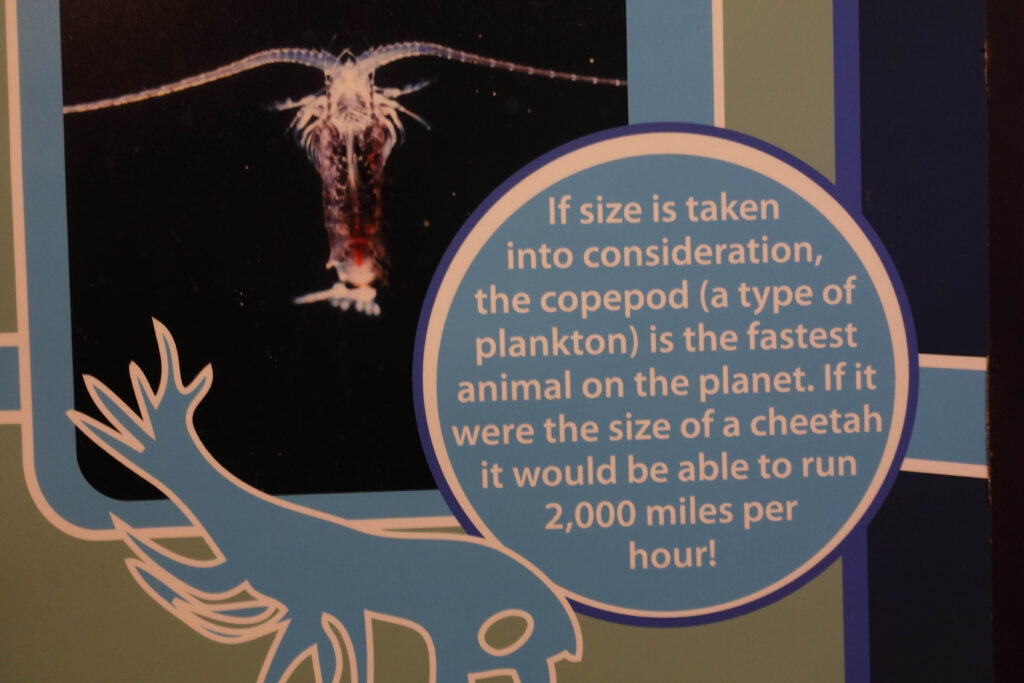
What is the fastest animal on the planet in relation to its body size? Forget the cheetah! An animal belonging to the plankton called copepod. If it had the size of a cheetah, it would be capable of moving at a speed of 3,200 km/h …
Which marine species are among the beneficiaries of climate change? – Jellyfish! When there is more CO2 in the air, the ocean becomes more acidic. And jellyfish love this and immediately multiply even more! And more. And more.
The SeaLife Center scientists also conduct long-term studies in many areas, such as the following: On March 24, 1989 (a Good Friday!), the oil tanker Exxon Valdez hit a reef near the port of Valdez. 11 million gallons / 41 million liters of oil spilled into the sea. The oil spread southwestward, covering 1,300 miles / over 2,000 km of coastline with a thick black layer. It is estimated that billions of salmon and herring eggs were destroyed, and 250,000 seabirds, 2,800 sea otters, 300 harbor seals, 250 sea eagles, and 22 orcas died in agony. How many other creatures of the coast (crabs, mussels, starfish, …) died cannot be estimated.
Thousands of volunteers worked to remove the oil from the coasts. To date, this has not been fully achieved. What all this means for the flora and fauna of the coast and the sea is explored at the SeaLife Center. For example, the population of seabirds that feed on fish has not recovered to this day.
The station also breeds Steller’s eiders, whose numbers have already declined by 96% in their natural habitat in western Alaska due to climate change.
Marine life that is found injured or sick is cared for until it can be released back into the wild.
I would like to list the whales that can be seen in the area. The fact that I saw both humpback whales and orcas is particularly fortunate.
There are the gray whales (12 – 15 m) that migrate back and forth between Alaska and Baja every year – a distance of almost 5,000 km. This results in the distance to the moon and back again for a whole gray whale life. They often “stand” vertically in the water with either the head or the tail fin sticking out.
Fin whales (20 – 27 m) are the second largest animals in existence. Per day they eat almost 2,000 kg of fish or krill and pee three bathtubs full. (We always wanted to know that).
Orcas (7 – 10 m) are conspicuous for their black dorsal fins, which can reach 1.5 m in the male. They are gregarious and live in groups with related whales.
Humpback whales (12 – 18 m) communicate through song. Their side fins reach up to one third of the body length. I saw two humpback whales jump out of the water, the photo is of the second one.
Dall’s porpoises (about 2 m) are black and white like orcas. They live in groups of ten to twenty animals and reach speeds of 55 km/h.
So much for whales showing up in Alaska at different times of the year.
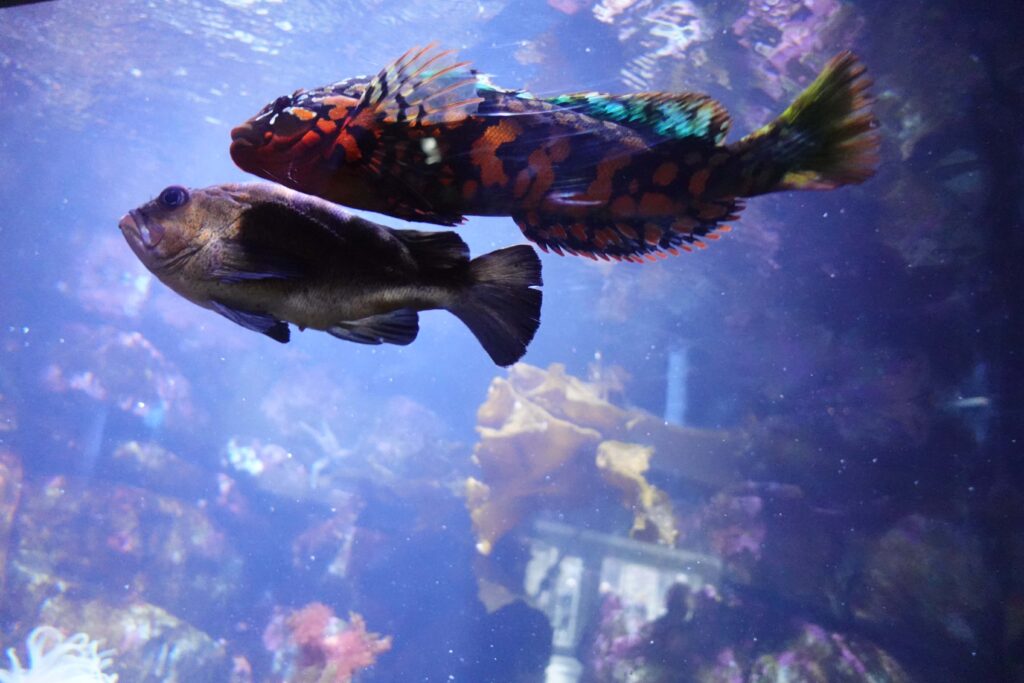
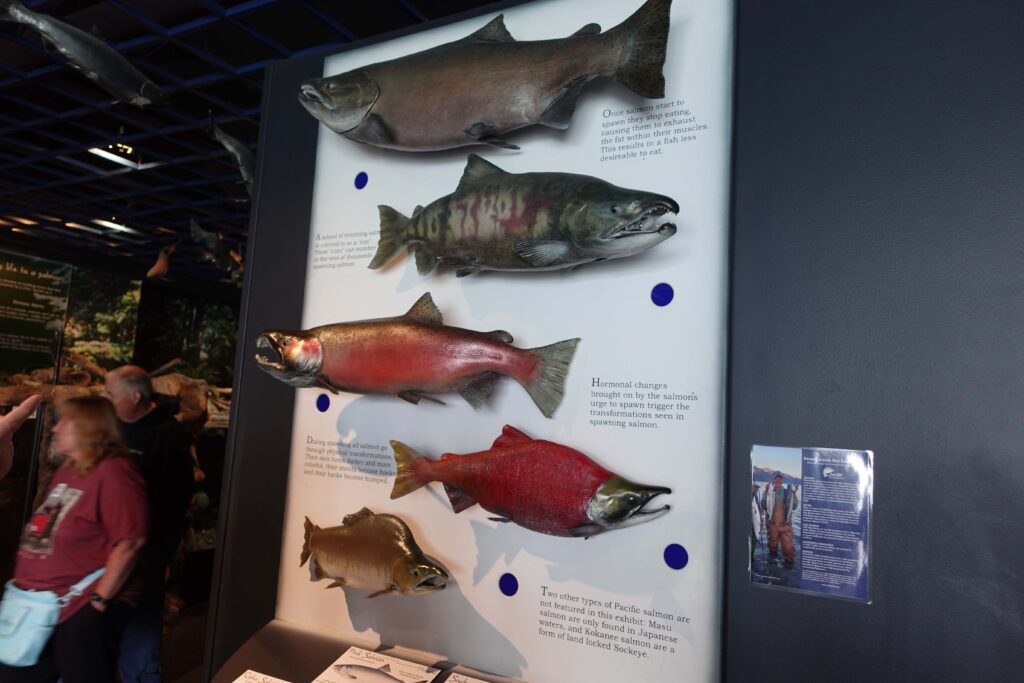
For the people here, the salmon are of much greater importance. There are five different types. At the SeaLife Center there is a detailed map of which species can be found in which Resurrection Bay river and when.
A last stroll through Seward …


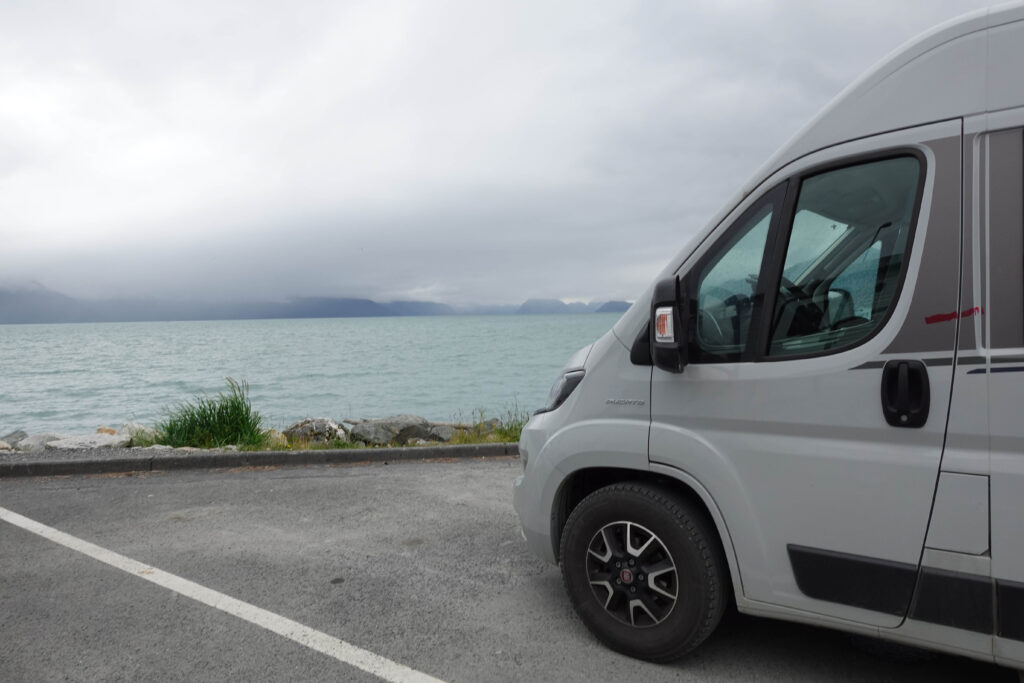
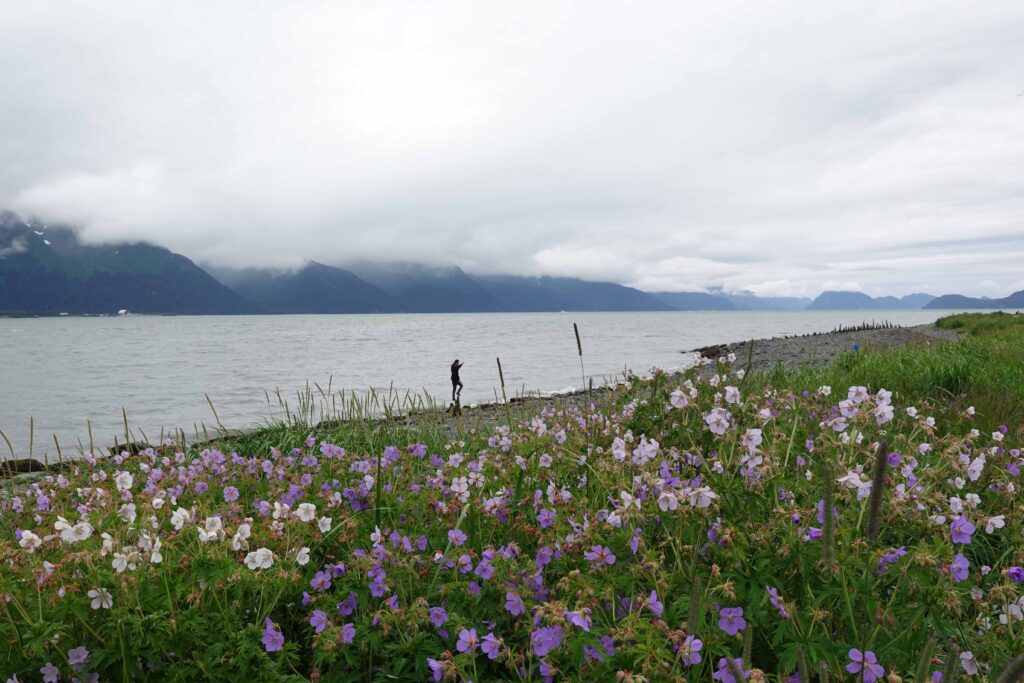
Leaving Seward was difficult for me. And because it was clear to me from the start that I wouldn’t feel any different in Homer, I took the precaution of booking the ferry from Whittier to Valdez for August 4. The Kenai Peninsula is so special, I could last a very long time there! (At least in the warm season …)
